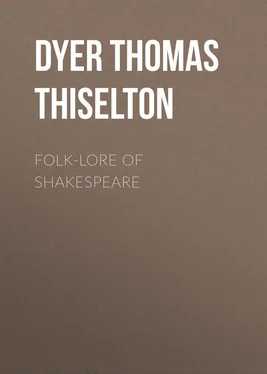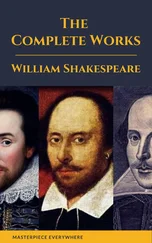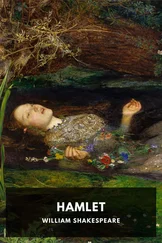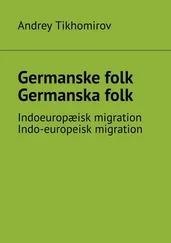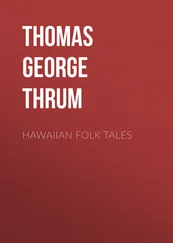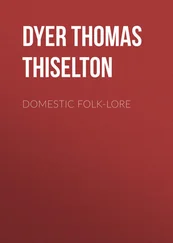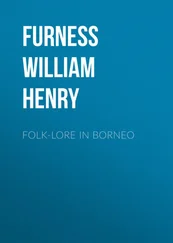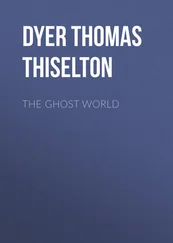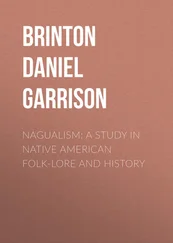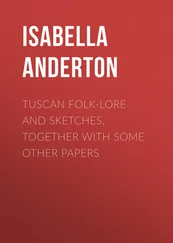Thomas Dyer - Folk-lore of Shakespeare
Здесь есть возможность читать онлайн «Thomas Dyer - Folk-lore of Shakespeare» — ознакомительный отрывок электронной книги совершенно бесплатно, а после прочтения отрывка купить полную версию. В некоторых случаях можно слушать аудио, скачать через торрент в формате fb2 и присутствует краткое содержание. Жанр: foreign_antique, foreign_prose, на английском языке. Описание произведения, (предисловие) а так же отзывы посетителей доступны на портале библиотеки ЛибКат.
- Название:Folk-lore of Shakespeare
- Автор:
- Жанр:
- Год:неизвестен
- ISBN:нет данных
- Рейтинг книги:4 / 5. Голосов: 1
-
Избранное:Добавить в избранное
- Отзывы:
-
Ваша оценка:
- 80
- 1
- 2
- 3
- 4
- 5
Folk-lore of Shakespeare: краткое содержание, описание и аннотация
Предлагаем к чтению аннотацию, описание, краткое содержание или предисловие (зависит от того, что написал сам автор книги «Folk-lore of Shakespeare»). Если вы не нашли необходимую информацию о книге — напишите в комментариях, мы постараемся отыскать её.
Folk-lore of Shakespeare — читать онлайн ознакомительный отрывок
Ниже представлен текст книги, разбитый по страницам. Система сохранения места последней прочитанной страницы, позволяет с удобством читать онлайн бесплатно книгу «Folk-lore of Shakespeare», без необходимости каждый раз заново искать на чём Вы остановились. Поставьте закладку, и сможете в любой момент перейти на страницу, на которой закончили чтение.
Интервал:
Закладка:
Again, in “Othello” (iii. 3), 238 238 Also in same play, i. 3.
Iago exclaims:
“She that, so young, could give out such a seeming,
To seel her father’s eyes up close as oak;”
in allusion to the practice of seeling a hawk, or sewing up her eyelids, by running a fine thread through them, in order to make her tractable and endure the hood of which we have already spoken. 239 239 Turbervile, in his “Booke of Falconrie,” 1575, gives some curious directions as “how to seele a hawke;” we may compare similar expressions in “Antony and Cleopatra,” iii. 13; v. 2.
King Henry (“2 Henry IV.” iii. 1), in his soliloquy on sleep, says:
“Wilt thou upon the high and giddy mast
Seal up the ship-boy’s eyes, and rock his brains
In cradle of the rude imperious surge.”
In Spenser’s “Fairy Queen” (I. vii. 23), we read:
“Mine eyes no more on vanity shall feed,
But sealed up with death, shall have their deadly meed.”
It was a common notion that if a dove was let loose with its eyes so closed it would fly straight upwards, continuing to mount till it fell down through mere exhaustion. 240 240 Nares’s “Glossary,” vol. ii. pp. 777, 778; cf. Beaumont and Fletcher, “Philaster,” v. 1.
In “Cymbeline” (iii. 4), Imogen, referring to Posthumus, says:
“I grieve myself
To think, when thou shalt be disedged by her
That now thou tir’st on,” —
this passage containing two metaphorical expressions from falconry. A bird was said to be disedged when the keenness of its appetite was taken away by tiring , or feeding upon some tough or hard substance given to it for that purpose. In “3 Henry VI.” (i. 1), the king says:
“that hateful duke,
Whose haughty spirit, winged with desire,
Will cost my crown, and like an empty eagle
Tire on the flesh of me and of my son.”
In “Timon of Athens” (iii. 6), one of the lords says: “Upon that were my thoughts tiring, when we encountered.”
In “Venus and Adonis,” too, we find a further allusion:
“Even as an empty eagle, sharp by fast,
Tires with her beak on feathers, flesh, and bone,” etc.
Among other allusions to the hawk may be mentioned one in “Measure for Measure” (iii. 1):
“This outward-sainted deputy,
Whose settled visage and deliberate word
Nips youth i’ the head, and follies doth emmew ,
As falcon doth the fowl”
– the word “emmew” signifying the place where hawks were shut up during the time they moulted. In “Romeo and Juliet” (iii. 4), Lady Capulet says of Juliet:
“To-night she’s mew’d up to her heaviness;”
and in “Taming of the Shrew” (i. 1), Gremio, speaking of Bianca to Signor Baptista, says: “Why will you mew her?”
When the wing or tail feathers of a hawk were dropped, forced out, or broken, by any accident, it was usual to supply or repair as many as were deficient or damaged, an operation called “to imp 241 241 Imp, from Anglo-Saxon, impan , to graft. Turbervile has a whole chapter on “The way and manner how to ympe a hawke’s feather, howsoever it be broken or bruised.”
a hawk.” Thus, in “Richard II.” (ii. 1), Northumberland says:
“If, then, we shall shake off our slavish yoke,
Imp out our drooping country’s broken wing.”
So Massinger, in his “Renegado” (v. 8), makes Asambeg say:
“strive to imp
New feathers to the broken wings of time.”
Hawking was sometimes called birding. 242 242 Harting’s “Ornithology of Shakspeare,” p. 72.
In the “Merry Wives of Windsor” (iii. 3) Master Page says: “I do invite you to-morrow morning to my house to breakfast; after, we’ll a-birding together, I have a fine hawk for the bush.” In the same play (iii. 5) Dame Quickly, speaking of Mistress Ford, says: “Her husband goes this morning a-birding;” and Mistress Ford says (iv. 2): “He’s a-birding, sweet Sir John.” The word hawk, says Mr. Harting, is invariably used by Shakespeare in its generic sense; and in only two instances does he allude to a particular species. These are the kestrel and sparrow-hawk. In “Twelfth Night” (ii. 5) Sir Toby Belch, speaking of Malvolio, as he finds the letter which Maria has purposely dropped in his path, says:
“And with what wing the staniel 243 243 The reading of the folios here is stallion; but the word wing, and the falconer’s term checks , prove that the bird must be meant. See Nares’s “Glossary,” vol. ii. p. 832.
checks at it”
– staniel being a corruption of stangdall, a name for the kestrel hawk. 244 244 See kestrel and sparrow-hawk .
“Gouts” is the technical term for the spots on some parts of the plumage of a hawk, and perhaps Shakespeare uses the word in allusion to a phrase in heraldry. Macbeth (ii. 1), speaking of the dagger, says:
“I see thee still,
And on thy blade and dudgeon gouts of blood.”
Heron. This bird was frequently flown at by falconers. Shakespeare, in “Hamlet” (ii. 2), makes Hamlet say, “I am but mad north-north-west; when the wind is southerly, I know a hawk from a handsaw;” handsaw being a corruption of “heronshaw,” or “hernsew,” which is still used, in the provincial dialects, for a heron. In Suffolk and Norfolk it is pronounced “harnsa,” from which to “handsaw” is but a single step. 245 245 “Notes to Hamlet,” Clark and Wright, 1876, p. 159.
Shakespeare here alludes to a proverbial saying, “He knows not a hawk from a handsaw.” 246 246 Ray’s “Proverbs,” 1768, p. 196.
Mr. J. C. Heath 247 247 Quoted in “Notes to Hamlet,” by Clark and Wright, p. 159; see Nares’s “Glossary,” vol. i. p. 416.
explains the passage thus: “The expression obviously refers to the sport of hawking. Most birds, especially one of heavy flight like the heron, when roused by the falconer or his dog, would fly down or with the wind, in order to escape. When the wind is from the north the heron flies towards the south, and the spectator may be dazzled by the sun, and be unable to distinguish the hawk from the heron. On the other hand, when the wind is southerly the heron flies towards the north, and it and the pursuing hawk are clearly seen by the sportsman, who then has his back to the sun, and without difficulty knows the hawk from the hernsew.”
Jay. From its gay and gaudy plumage this bird has been used for a loose woman, as “Merry Wives of Windsor” (iii. 3): “we’ll teach him to know turtles from jays,” i. e. , to distinguish honest women from loose ones. Again, in “Cymbeline” (iii. 4), Imogen says:
“Some jay of Italy,
Whose mother was her painting, 248 248 That is, made by art: the creature not of nature, but of painting; cf. “Taming of the Shrew,” iv. 3; “The Tempest,” ii. 2.
hath betray’d him.”
Kestrel. A hawk of a base, unserviceable breed, 249 249 Nares’s “Glossary,” vol. ii. p. 482.
and therefore used by Spenser, in his “Fairy Queen” (II. iii. 4), to signify base:
“Ne thought of honour ever did assay
His baser breast, but in his kestrell kynd
A pleasant veine of glory he did fynd.”
By some 250 250 Harting’s “Ornithology of Shakespeare,” p. 74.
it is derived from “coystril,” a knave or peasant, from being the hawk formerly used by persons of inferior rank. Thus, in “Twelfth Night” (i. 3), we find “coystrill,” and in “Pericles” (iv. 6) “coystrel.” The name kestrel, says Singer, 251 251 “Notes,” vol. iii. pp. 357, 358.
for an inferior kind of hawk, was evidently a corruption of the French quercelle or quercerelle , and originally had no connection with coystril, though in later times they may have been confounded. Holinshed 252 252 “Description of England,” vol. i. p. 162.
classes coisterels with lackeys and women, the unwarlike attendants on an army. The term was also given as a nickname to the emissaries employed by the kings of England in their French wars. Dyce 253 253 “Glossary to Shakespeare,” p. 88.
also considers kestrel distinct from coistrel.
Интервал:
Закладка:
Похожие книги на «Folk-lore of Shakespeare»
Представляем Вашему вниманию похожие книги на «Folk-lore of Shakespeare» списком для выбора. Мы отобрали схожую по названию и смыслу литературу в надежде предоставить читателям больше вариантов отыскать новые, интересные, ещё непрочитанные произведения.
Обсуждение, отзывы о книге «Folk-lore of Shakespeare» и просто собственные мнения читателей. Оставьте ваши комментарии, напишите, что Вы думаете о произведении, его смысле или главных героях. Укажите что конкретно понравилось, а что нет, и почему Вы так считаете.
